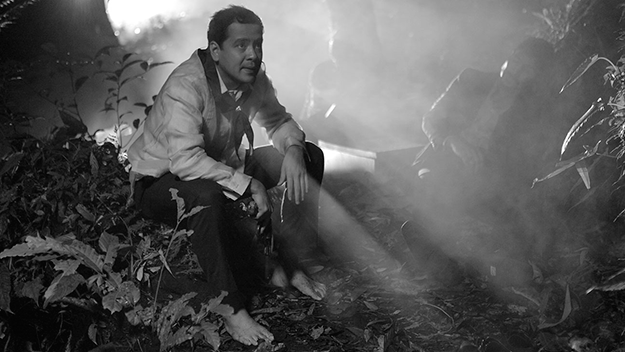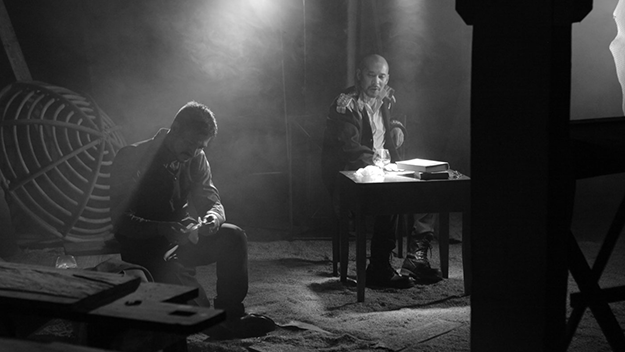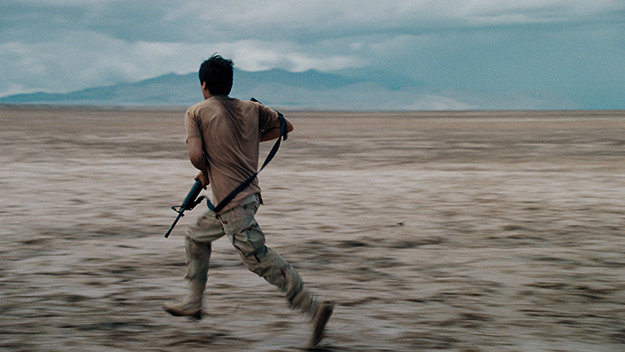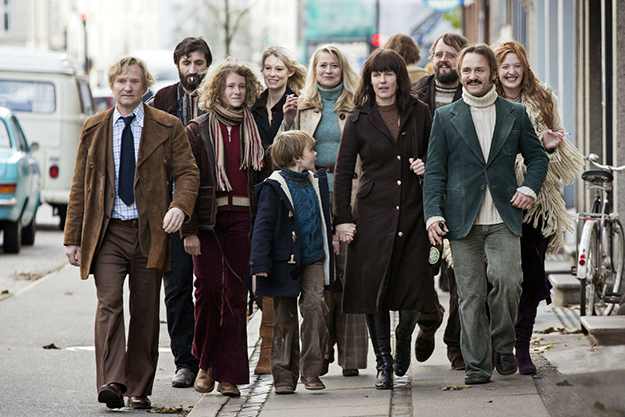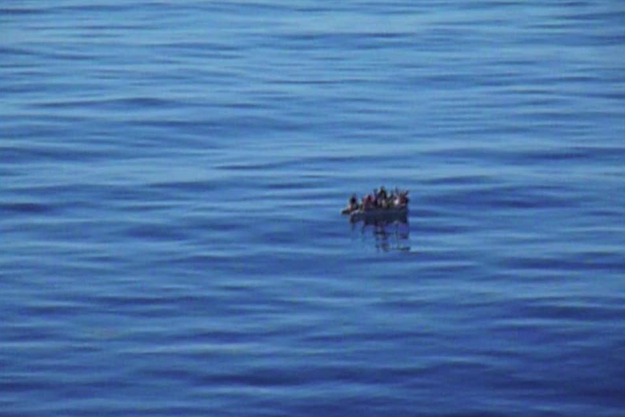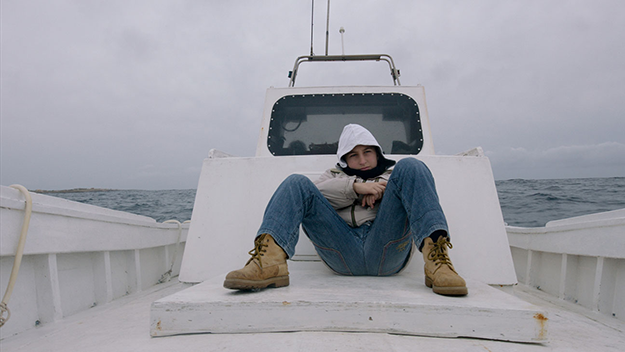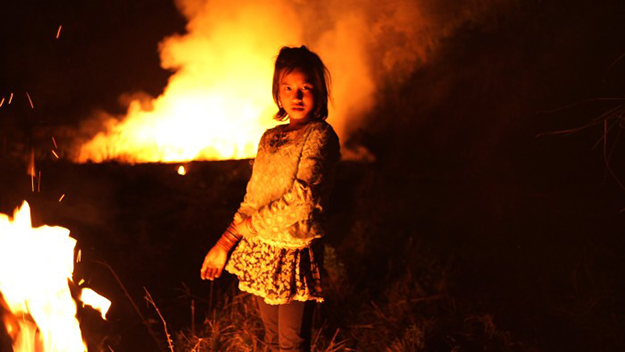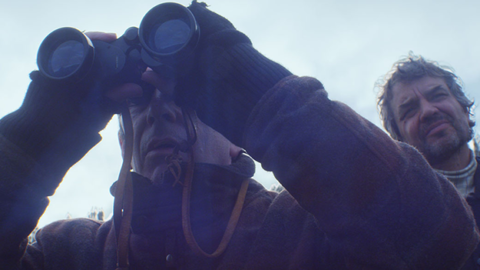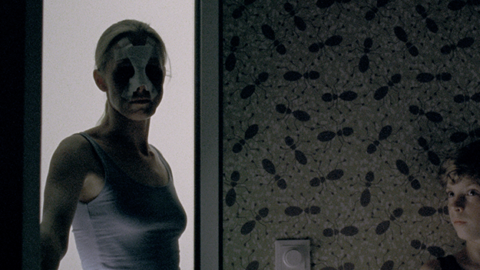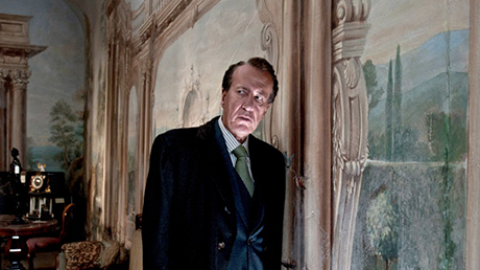Festivals: Berlin
A Lullaby to the Sorrowful Mystery
When late last year the word made the rounds that Lav Diaz’s 482-minute A Lullaby to the Sorrowful Mystery had been selected for competition in Berlin, the question immediately arose: how would they do it? When would they schedule it—at the beginning as an opening statement of a different kind, or toward the end as a closing bang? And at what time—would the red-carpet-conscious Berlinale sacrifice an evening of celeb news and photo ops at the altar of cinematic art hors normes, or would they start early, during press screening hours? And most important, would they present it in one go or in installments?
The solution the festival found proved wise: only two presentations, both starting early in the morning and with a one-hour break at halftime; no separate screening for the accredited. Focusing things like this was a smart move, for both presentations were very well attended and ended in ovations. Diaz visibly enjoyed the adoration he received—all deserved, for he had achieved something that seemed almost impossible. He had made it into an A-level-festival competition without compromising his ethics, morality, or aesthetics—and with one of his greatest works so far, to boot. Good thing the jury rose to the occasion and honored A Lullaby to the Sorrowful Mystery with the Silver Bear Alfred Bauer Prize (“for a feature film that opens new perspectives”).
Diaz has been talking about this project for decades. Rooted partly in Mga Tala ng Aking Buhay, the slim 1928 autobiography of Gregoria de Jesús, widow of Andrés Bonifacio, A Lullaby to the Sorrowful Mystery narrates the story of her month-long search for the remains of her husband. Bonifacio, a hero of the Philippine Revolution, was murdered during an internecine struggle, together with his brother, Procopio. In contrast to the man responsible for Bonifacio’s violent death—Emilio Aguinaldo, considered the first Philippine president, history’s victor—the brothers were not content with liberating their people. They wanted to change society to better the lot of the oppressed; theirs was a vast social project as much as it was a patriotic one. To this day, the Bonifacio brothers’ bodies remain missing.
A Lullaby to the Sorrowful Mystery
A Lullaby to the Sorrowful Mystery is not a film about Bonifacio,1 but it is at least the third film in four years that’s related to the historical significance and personal biography of Bonifacio. There’s a war raging on Philippine screens over the depiction of the nation’s history, and therefore its future. Most of these films have a political agenda, plus ties to parties and other powerful organizations.2 A Lullaby is greater than all that—a complex, demanding allegory and philosophical treatise in which mythical figures like the Tikbalang (a creature that’s half human, half horse) meet with real historical persons who in turn mingle with characters straight out of Russian literature, like the Dostoyevskian Simoun (a Raskolnikov with Mishkin-esque undertones) and his somewhat Tolstoyan mirror character, Cesaria Belarmino. A visually sumptuous modernist monument whose beauty is at times of an unexpectedly Eisensteinian inspiration, Diaz’s film is a work of utmost urgency—a clarion call for change that ends with the Philippine Revolution’s anthem, “Jocelynang Baliwag” (whose development through several versions is part of the film’s narrative). Diaz certainly made no secret out of his political hopes for A Lullaby to the Sorrowful Mystery: to influence upcoming elections. That might be the answer to a question posed in Mga Tala ng Aking Buhay: “So just think, brothers, whether or not there was any justice in the cruelty they committed against us.”
A Lullaby to the Sorrowful Mystery alone would have made Berlin ’16 worth the trip, but lo and behold, there was more excellent work to be found—and, unexpectedly, almost all in the Competition. In fact, with its treasures—Gianfranco Rosi’s Fire at Sea, Mani Haghighi’s A Dragon Arrives!, Ivo Ferreira’s Letters From War and Yáng Chāo’s Crosscurrent, and of course A Lullaby to the Sorrowful Mystery—the Competition easily outdid the Forum in terms of daring and inventiveness. The designated envelope-pushers looked more like a bunch of pencil-pushers. In fact, more than half of the films competing for the awards were remarkable and worthy of mention, among them Alex Gibney’s Zero Days, which casually turns from a ballsy investigative documentary on cyber warfare and secret service cabals into a rumination on the nature of reality in the digital age; Jeff Nichols’s Midnight Special, an essay on paranoia politics and religious extremism in the U.S. hinterland done as a piece of highbrow horror-fantasy; and, in an aesthetically much more classical modernist register, André Téchiné’s tale of teenage passion and nascent gay self-awareness, Being 17.
The selection committee for once was wise enough to relegate most of the international art-house dross to out-of-competition status, though the lineup wasn’t perfect. Spike Lee’s eccentric agit-pop Lysistrata musical Chi-Raq deserved a shot at the Bears, as did Terence Davies’s meditation on Emily Dickinson, A Quiet Passion, which got dropped into a very particular hell called the Berlinale Special. Among many other things the Davies is an extremely moving and intelligent look at religion—how discussions about grace, destiny, damnation, and the hereafter can be part of a culture’s daily intellectual life, as it seemingly was in the film’s setting, 19th-century Amherst, Massachusetts, and as one rarely sees these days in cinema. Dumped in the Panorama, Oliver Schmitz’s Shepherds and Butchers takes a brutally unflinching look at capital punishment in late-Apartheid South Africa, examining with a most commendable directorial rigor and restraint what happens when a culture is rooted in compartmentalizing and secrecy, pitting people against each other—till first one person cracks, and soon the nation. The competition would have gained a lot from the presence of these films. Mediocrities like Genius, Michael Grandage’s somewhat naff take on Thomas Wolff’s editor Maxwell Perkins, or Rafi Pitt’s Soy Nero, a well-meaning but artistically misguided attempt at mashing up two hot topics (immigration and the Middle East wars), could just as well have been unloaded in Panorama, which these days deals almost exclusively in brainless do-gooder-tainment.
Soy Nero
Yet by the standards of the Berlinale under festival director Dieter Kosslick, the 2016 competition was almost mind-blowing. One can only hope that this wasn’t an anomaly. Too often in recent memory the Berlinale seemed on the brink of returning to greatness, only to fall back into Kosslick’s social democratic banalities. These tendencies reared their ugly head only once this year with Vincent Perez’s abomination Alone in Berlin, an especially waxen and anodyne example of Berlin Republic event-movie Neoliberal Realism. Even this disaster had a good side effect, leading some to revisit the hope-drained source novel by Hans Fallada, finished only days before his untimely death in 1947, and others to Alfred Vohrer’s truly disturbing 1975 adaptation.3 Another Berlinale selection, Dominik Graf’s latest, Doomed Love – A Journey Through German Genre Film (directed with Johannes Sievert) paid tribute to Vohrer’s peerless genius, but that’s an exception, of course. Some wiseacres suggested that Graf’s film should have been the festival’s opening night attraction, instead of the smugly pointless Hail, Caesar!.
The Jury was not completely up to the Competition’s challenge, ignoring two of its most outstanding entries, Mānī Haghighi’s A Dragon Arrives! and Ivo Ferreira’s Letters From War. And they short-changed a third, Crosscurrent, which merely won the incomparable Mark Lee/Lǐ Píngbīn an Outstanding Artistic Contribution Silver Bear for camerawork—an award that reduced Yáng Chāo’s broody, moody, but decidedly brainy prose poem on the destiny of PR China to a series of pretty pictures. These three fiction films all share a vexingly enchanted relationship to the real and the factual. Each draws in one way or another on non-fiction impulses: whether the method of production (Crosscurrent was shot in a part-improvised style on a boat travelling the Yangtze), or historical events (for A Dragon Arrives!, the mysterious circumstances around the making of an Iranian classic, the 1965 Brick and Mirror / Ḫešt va Āyeneh, by Haghighi’s grandfather, Ebrāhīm Golestān; for Letters from War, António Lobo Antunes’ correspondence with his wife from the days he served as a military doctor in Portugal’s doomed battle over its soon-lost colony Angola).
A Dragon Arrives! is actually all about confusing reality and spin, myth and paranoia, history and invention. It doesn’t matter whether (as stated in the film) there really was an assassination attempt on an Iranian prime minister on January 22, 1965, or not—what matters is that at some point there was one and that at some other point there will most certainly be another one. Haghighi’s film is full of allusions to Iranian popular cinema of the ’60s and ’70s, in gloriously outré colors, with a healthy dose of grimly surrealist humor that never gets old. It’s heady stuff, and pleasantly crazy. Only the Forum’s sole masterpiece, Daniil Zinčenko’s absurdist science-fiction zone movie, Elixir, with its pandemonium of Soviet and New Russian archetypes stumbling through an occasionally magic forest, came close to the pleasures, attractions and finally insights offered by A Dragon Arrives!.
The Commune
Jury head Meryl Streep and company instead played it relatively safe. Trine Dyrholm got the Best Actress Silver Bear for Thomas Vinterberg’s smart-ass look at ’70s libertinism, its self-deceptions and disappointments, The Commune. It was an especially regrettable decision as the award should have gone to the lone hometown competition entry, Anne Zohra Berrached’s genuinely painful 24 Weeks: Julia Jentsch’s harrowing tour de force performance as a woman who has to decide whether or not to abort a child certain to be born with physical defects left many stumbling out of the cinema in stunned silence. Majd Mastoura scored the Best Actor Silver Bear for Mohammed Ben Attia’s agreeable-enough variation on Finding Miss Right, Hedi, a film so innocuous that even its supporters took it only semi-seriously. Handing Mia Hansen-Løve the Best Director Silver Bear for a job very well done on Things to Come was an acceptable move, if one looks at the film strictly from the perspective of craft—but Crosscurrent, with its crazy mix of documentary basis and flights of fiction fancy, was a decidedly meaner feat to pull off. Similar things could be said of the Best Screenplay Silver Bear which went to Tomasz Wasilewski for his United States of Love; again, international art-house technique was lauded and a film like A Dragon Arrives! that defied all categorization was excluded. And Danis Tanović’s Death in Sarajevo, which the jury considered worthy of its Grand Prize Silver Bear, is nothing more than another fraud by one of contemporary cinema’s foremost charlatans.
All of which is cautiously forgiven in light of the Golden Bear, which most deservedly went to Gianfranco Rosi’s Fire at Sea—a look at the island of Lampedusa that’s in equal parts inspired by Vittorio de Seta and Cesare Zavattini. Rosi’s film wasn’t to everyone’s taste, to put it mildly. In discussions, it often got pitted against Philip Scheffner’s Havarie, one of the most morally abject works the Berlinale 2016 had on offer, in the Forum.
The contrast is telling: Havarie is a prime example of an AV praxis dear to the discourse-happy hipster crowd. It’s all about intentions and attitudes instead of engagement, be it emotional or political. “Reflection” is the name of the game. This is a cinema for people who like to talk about problems, and believe their erudite-seeming but vacuous babbling is helpful. Like all of Scheffner’s films so far (except maybe his only strikingly investigation-driven work, Revision), Havarie is a concept piece, his most extreme one so far: a three-minute YouTube video of a rubber dinghy full of refugees shot from an ocean cruiser is stretched out to last an hour and a half. The soundscape consists primarily of stories told by people who were in one way or another involved in the incident—like the guy who made the video, or the captain of a vessel that passed by (but can’t be seen in the film)—as well as the radio traffic of Spain’s sea rescue. We also hear an invented story that could just as well have been true for one of the people in the boat. Nothing gels here, and everything is floated; questions are raised for empty discussion. The film’s image is merely an image, each refugee in the boat a cipher, the cruise passengers (seen briefly in a pan) a mass of people vaguely guilty of… something, simply by being where they are.
Havarie
Havarie epitomizes the Forum today. The majority of films screened in what was once the Berlinale’s finest section are small, glibly vague, unappealing to the senses, self-involved, and too often mainly concerned about their “community” and its place relative to norms (gender, identity, etc.). Something massive that tries to find a master metaphor for the human condition—like section stalwart Nikolaus Geyrhalter’s vanitas Homo sapiens—now looks out of place here, and was met, unsurprisingly enough, with an often indifferent and nearly hostile reception. The film’s ruin-littered landscapes of man-made disaster, ranging from the bunker-pockmarked Atlantic coast to the fields of Fukushima, don’t offer the kind of certainties demanded by the chattering classes; besides, it’s too beautiful, disturbingly so (like the often hauntingly Malickian Letters from War). The Geyrhalter offers a sensation, a way of posing a question or idea those folks seem to abhor, and it conceives its audience as vast and united in common interests (such as global survival), and not just a bunch of people with problems to talk about.
The Forum still had its gems and small revelations, like Daichi Sugimoto’s casually tender autobiographical fiction A Road, and Deadweight, Axel Koenzen’s stoic tale of a Finnish seafarer’s search for forgiveness in the wake of a work-related death. Both were shot in styles that again mix documentary and fiction filmmaking strategies, both telling stories of men whose respective lives change—which they seem to accept more than shape. In a certain way, the Forum provided its own critique by way of a special program devoted to Japanese Super-8 films from the 1980s and ’90s—easily the most outstanding thing Berlin ’16 had on offer, a cavalcade of go-for-broke cinephile inventiveness and mad-cap fun. Look at the delightful will for silliness in Akira Ogata’s punk grotesque Tokyo Cabbageman K (80), or the crazy energy and inspiration in Happiness Avenue (86) by Katsuyuki Hirano, soon to become Japan’s undisputed grandmaster of surrealist video porno! Nothing even remotely as vibrant, vivacious, curious and devil-may-care joyful was to be found among the new Forum films on display—nothing as driven, as hell-bent on changing the world as we know it.
Change is sometimes dirty and deeply tiring work, as Gianfranco Rosi shows in Fire at Sea—something many a Scheffner-ite found most objectionable. Yes, Rosi shows refugees at Lampedusa who are more dead than alive, emotionally drained and physically wasted after a gruesome journey that invariably not everybody survives. He shows body bags, and by observing the rescuers’ difficulties moving them suggests how much a human life weighs, literally as well as symbolically. Rosi also shows the routines, the choreographies developed over the years by the people involved in processing the newly arrived. He has a doctor show the picture of a body disfigured by chemical burns and explain how these happen on those journeys by boat. He shows the refugees as divided among each other, then for a few moments united as one in the memory of what they went through, only to sit finally in a walled compound waiting for a judge to decide their fate—a brief respite from an existence almost always marked by poverty, and too often by war. In contrast to that, there’s Samuele, a boy of 12 who teaches his friends to carve slingshots and has trouble with one of his eyes—it’s lazy, and needs to be forced into action through a patch over his good eye. The little master marksman now barely hits a tree where only a few weeks ago he’d have been able to shoot down a fruit. The path of Samuele, a true child of Lampedusa, never properly crosses those of the refugees, except for the doctor who looks after all of them.
Fire at Sea
People objected to Rosi showing suffering and death, and they objected to his method, best described as fiction filmmaking featuring people playing themselves, with a genuine documentary impulse. They also objected to the film’s devastating beauty—one perhaps doesn’t want to know how many sea rescues Rosi must have observed to finally be able to shoot one in a fashion almost Fordian in its nocturnal grandeur and feeling for ritual as the core of human existence. Yet Rosi shows people who do something and who live with what they have experienced. They’re exemplary, even if most of them are merely doing their “jobs” the guys processing the refugees upon arrival don’t come off as nice people, but if in the depth of their hearts they didn’t mean well, why would they be there, at the front line of humanity’s struggle?
Fire at Sea is a prime example of muscular humanism that heeds the conclusion of Susan Sontag’s Regarding the Pain of Others: that it’s not enough to just look and recognize suffering, but that it needs to be told, narrated, made into a story—something people can act upon. Being a witness, reporting, offering a first narrative, actively showing a sense of solidarity with the oppressed and the persecuted also helps, as testified by Wáng Bìng’s Ta’ang, an urgent account of a refugee crisis that Western media so far has rarely looked at: that of the Ta’ang fleeing the civil war in their native Burma, hoping to find sanctuary and shelter in the PRC. Rosi and Wáng most probably would have your back when the shit hits the fan, but don’t wait for Scheffner—his sort might come only when everything is over.
Ta’ang
Top Ten Berlinale 2016
- A Lullaby to the Sorrowful Mystery Lav Diaz, Philippines
- A Quiet Passion Terence Davies, U.K.
- Tectonic Plate Mika Taanila & Harry Salmenniemi, Finland
- Fire at Sea Gianfranco Rosi, Italy
- The Trap Jayarāj Rājaśēkharan Nāyr, India
- A Dragon Arrives! Mānī Ḥaqīqī, Iran
- Elixir Daniil Zinčenko, Russia
- Creepy Kiyoshi Kurosawa, Japan
- Letters From War Ivo Ferreira, Portugal
- (tie) Ta’ang Wáng Bìng, China + The Meadow of Things [Digital Reproduction] (1974-87/16, Heinz Emigholz) & Karla [Preservation DCP of a work print] (1965-66/15, Hermann Zschoche)
1. Those looking for one should try Richard Villarosa Somes’s nervously angry, elegiac, low-budget epic Supremo from 2012 (and skip Enzo Williams’s more pedantic than pedagogic Bonifacio: The First President, from 2014). A Lullaby to the Sorrowful Mystery is the fourth on the subject, if one includes Kiri and Sari Raissa Lluch Dalena’s 2014 dialectical musical about the female side of the Philippine Revolution, Women of Malolos. Bonifacio is not even the only figure of that period examined in recent Philippine cinema: Mark Meily’s overblown The President (12), a big-budget white-wash of Aguinaldo; and the Philippine’s last Academy Awards submission, Jerrold Tarog’s somewhat more interesting General Luna (15).
2. The star of El Presidente, for example, is not only an actor but also a corrupt politician ferociously trying to give his image a make-over, while several of the backers behind Women of Malolos come from left-leaning groups.
3. This merits serious critical reevaluation as another salvo against (FR)German hypocrisy by the Bonn Republic’s foremost genre masters. A gay, deeply cynical, bourgeoisie-baiting bête noir, Vohrer fought his private partisan war with the fatherland’s conservative elite, lobbying Wallace-missiles, Simmel-shells, and Ganghofer-grenades roughly every six months at the nation’s movie audiences, before withdrawing completely into TV towards the end of the ’70s. Even that was pure tactics, of course, for TV meant close contact combat, mano a mano, with the nation’s eyes and ears, its very soul a million times divided. The film was one of Vohrer’s last movies for cinema!
Olaf Möller is a Cologne-born and -based film critic, writer and curator.



